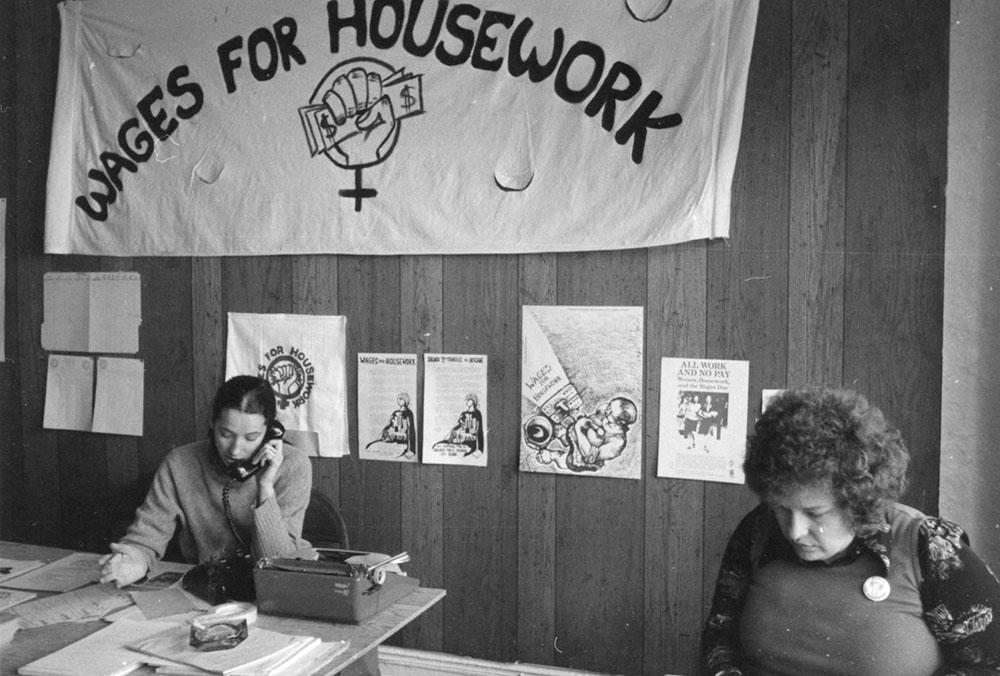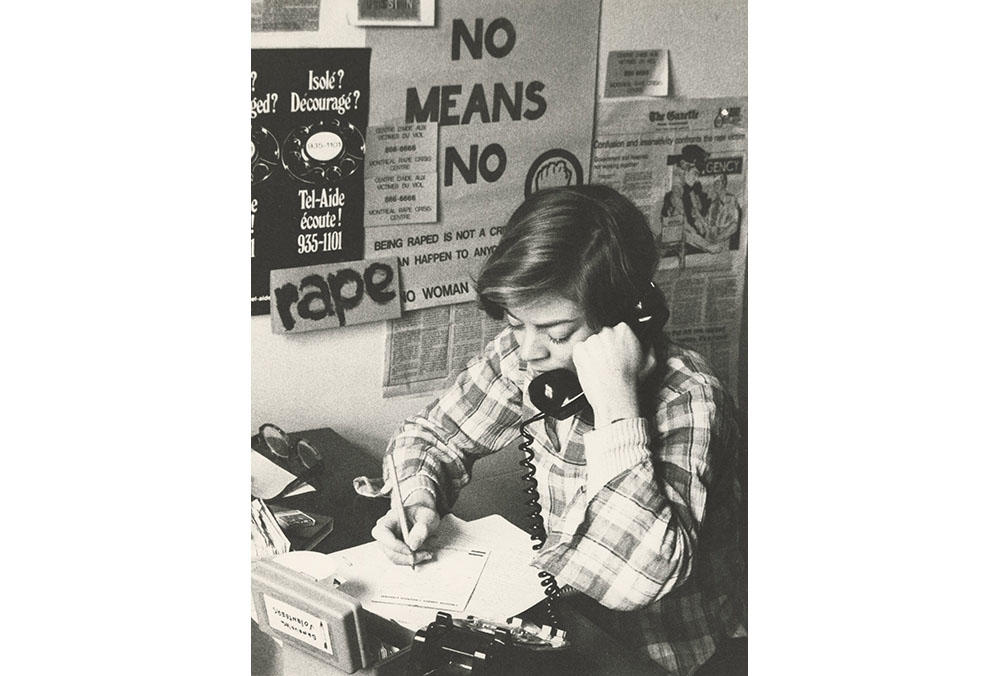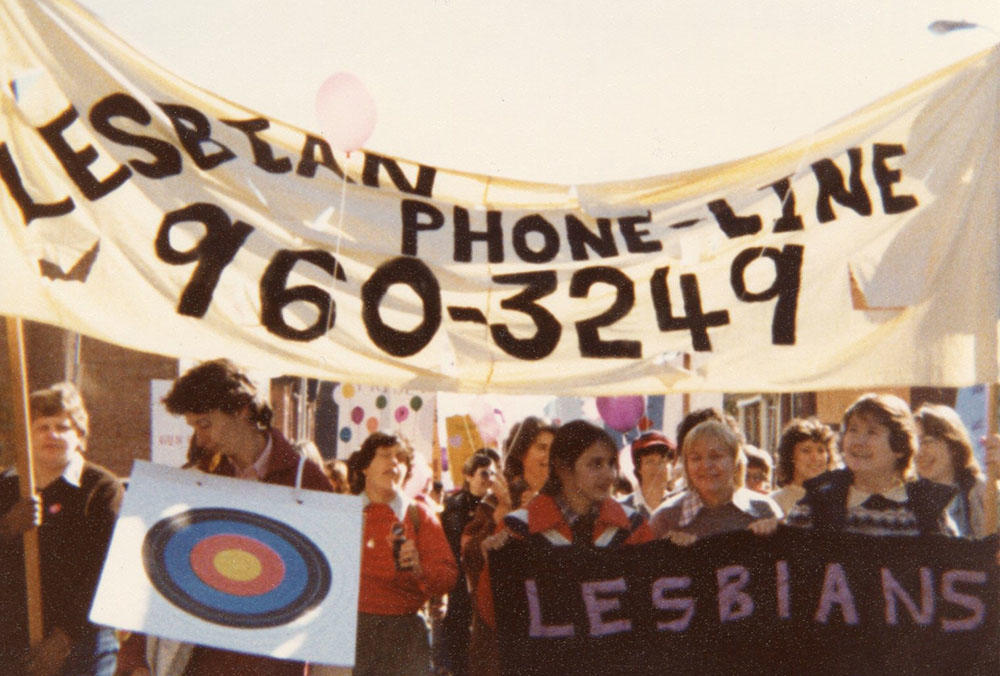Here is the indispensable lady. If she would go on strike, the business world would collapse. The men would become immobilized. Who would get the coffee, make up excuses, or handle the volume of minute details? Who knows where everything is and who keeps the office running smoothly? She does. The boss is too busy to run errands, dust desks, file letters, and type. He has more important things to attend to. And besides, this is why he has a secretary.
- “The Secretary” by Lyn Blaze, originally published in Women: A Journal of Liberation, vol. 1, no. 2, Winter 1970
Across North America throughout the second half of the 20th century, the women’s liberation movement saw women entering the paid workforce in greater numbers than ever before. On the heels of the radical 1960s, Canadian women sought to enter “non-traditional” fields which had previously been closed to them, including medicine, law, business, politics, science, trades, and technology. These women also fought for workers’ rights, including equal pay for work of equal value, and they criticized women’s relegation to what they termed “job ghettos” or “pink-collar work.” In other words, many feminists argued that businesses were kept afloat off a pool of cheap female labour, and they struggled against the dominant view that white women were especially suited for clerical tasks. On the other hand, Black, Indigenous, and racialized women were still excluded from “pink-collar” jobs due to racist interpretations of femininity that coincided with the cultural association between women and clerical work.
Considering these incredibly valid social critiques, the historical disparagement of clerical or secretarial work can sometimes obfuscate its indispensable role in the women’s liberation movement. Browsing through scores of records contained in The University of Ottawa Women’s Archives, it becomes clear that the previous century’s long arc of women's liberation was sustained on the backs of white and racialized women workers and volunteers who made photocopies, took notes, organized mailing lists, and answered the phone. Consider, for example, the clandestine abortion referral networks organized by telephone in the 1970s; the first women’s centres and rape crisis centres that operated telephone counselling and referral services; and the earliest immigrant women’s centres that provided women with remote translation and interpretation assistance via telephone.

Last November, I was fortunate enough to sit down and chat with Pat Hacker, a background figure in the women’s liberation movement who worked and sometimes staffed the telephones at the Women's Career Counselling Centre, the first Ottawa Women’s Centre, the first Ottawa Rape Crisis Centre, The Morgentaler Clinic in Toronto, and The Bay Centre for Birth Control throughout the 1970s and 1980s. She also helped to organize the “Ad Hockers” Conference on Constitutional Reform in February 1981. This conference was vitally important in shaping section 28 of the Canadian Charter of Rights and Freedoms, which “requires that the rights and freedoms guaranteed in the Charter be implemented without discrimination between the sexes.”
According to Hacker, the informal women’s liberation telephone network was crucial for organizing a conference with “no time, no money, and no resources.” Due to the “ad hoc” and “illegitimate” nature of the conference, individual women and women’s groups had to be contacted incredibly quickly, and the Ad Hockers received some support inside Parliament for their surreptitious use of government telephones. They obtained a government telephone code and used it after hours to contact women all over Canada, making particular use of Maureen O’Neill’s Status of Women office. Laughing, Hacker explained that the RCMP once showed up at her doorstep to question her because the monthly telephone bill for O'Neill's office had increased from roughly $500 to $2000 almost overnight. The group also used women’s home telephone numbers and assigned them with the task of answering phone calls and taking messages for the Ad Hockers. Hacker emphasized that “People would call and want to know who was in charge,” but the person in charge was always “whoever they were speaking to on the phone.”
Additionally, said Hacker, the Ad Hockers developed solidarity with the women administrative workers in Parliament: “The secretaries, or I should say the female staff, would photocopy [for us], and they would go up and down the elevators so that too many copies didn’t show up on a single photocopy machine... they would photocopy some on every floor in order to get the copies we were needing without causing the same problem that Maureen O,Neill had, with an excessive number of copies that couldn't be explained.”

In addition to connecting women’s groups within the movement, telephone networks and the women who staffed them were critical sites of communication between feminists and the wider community. Dr. Nikki Colodny, for example, was an abortion provider who worked with Dr. Henry Morgentaler and became active in the struggle to repeal abortion from the Criminal Code throughout the 1980s. She explained that Toronto clinics often relied on the Riverdale Immigrant Women’s Centre for interpretation services to provide reproductive healthcare for clients that did not speak English. At the Choice in Health Clinic which she helped to establish with a collective in 1988, they “wanted to make sure there was translation for every language, and the Immigrant Women's Centre helped us do that.” According to Dr. Colodny, the Centre “would get somebody on the phone with us, they would find somebody. I mean if we knew ahead of time we could schedule it with them, but they could always find somebody in the right language, and we would just do it by phone, making sure the person understood and that they were able to be reassured in their own language... which was so crucial.” Colodny herself, originally trained as a psychotherapist, got involved in the pro-choice movement by volunteering with the Ontario Coalition for Abortion Clinics (OCAC), where she made photocopies and performed other clerical tasks before she was trained as an abortion provider.

Other women’s telephone services included the Lesbian Phone-line, The Midwifery Hotline, The Women's Information Line, The Northern Women's Peer Advocacy Network, local Telelink Support Groups for women living with HIV/AIDS, and support lines for Lesbian and Gay Youth, to name a few. Not only did these services provide a listening ear for women in distress, but they also helped to educate women about their bodies, their resources, and their legal rights. Phone logs from the Ottawa Women’s Centre, for example, show how women called in for everything from sexual education to information about the legal process of divorce. These networks also connected their callers with feminist lawyers and other professionals who understood the issues facing women in Canadian society.
Following their inaugural conference in Winnipeg, 1975, feminist law students from the National Association of Women and the Law (NAWL) were criticized in the University of Manitoba’s student newspaper for convening a conference on “Women and Work.” According to the author, this event took place without the presence of “bona fide working women,” even though many legal secretaries were in attendance. Perhaps this critique, in its legitimate attempt to advocate for working-class women, reflects the cultural tendency of devaluing forms of labour that are traditionally considered “women’s work.” Although feminists rightly struggled against women's relegation to pink-collar jobs and the sexist condescension that they faced in such positions, archival records show how the history of women's liberation is also a history of clerical, administrative labour, and the (often unnamed) women who performed it.
